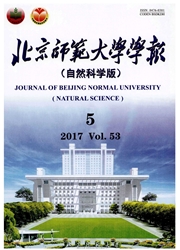

 中文摘要:
中文摘要:
综合分析了地下水含水层防污性能、化工企业潜在污染源和地下水价值等关键因素,以下辽河平原区为研究对象,构建适宜于该区的地下水环境风险相对风险模型(RRM).以地下水水质中化工企业特征污染因子为受体,识别并量化在区域化工企业分布压力下,地下水环境系统风险值分布状况.计算结果显示:下辽河平原相对高风险区主要分布在沈阳浑河区域,面积35km~2;较高风险区主要分布在沈阳浑河区域外围以及盘锦市辖区,面积414km~2;中等风险区分布在沈阳、辽阳、辽中、盘锦、营口市辖区工业集中分布区内,面积1 025km~2,均需采取针对性的保护措施.
 英文摘要:
英文摘要:
Northeast Plain is one of the four Great Plains in China. Northeast Plain is an important industrial area in both Liaoning Province and the northeast region. However, due to rapid economic development in recent years, water pollution and water quality deterioration issues have emerged. Assessing groundwater environmental risk in the region has therefore become necessary. A new approach to assess environmental risk of regional groundwater posed by chemical enterprises is presented. A relative risk model was coupled with risk source analysis, groundwater vulnerability index, and receptor analysis. A spatial analysis tool within GIS was used to interpolate and annotate data to develop environmental risk maps of regional groundwater. Level of risk was divided from high to low level into five ranks (V, IV, III, II, I). Areas of relative risk rank (RRR) V was found to cover 35 km2 in the Hun River fan in Shenyang, RRR IV covers 414 km2 around the RRR V area and Panjin city. The model proves a rapid and effective tool to evaluate rationality of regional chemical enterprise layout, to protect groundwater and to reduce environmental risk.
 同期刊论文项目
同期刊论文项目
 同项目期刊论文
同项目期刊论文
 期刊信息
期刊信息
